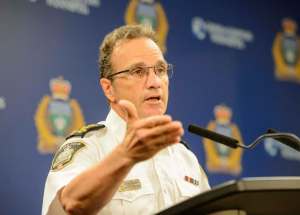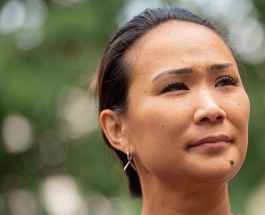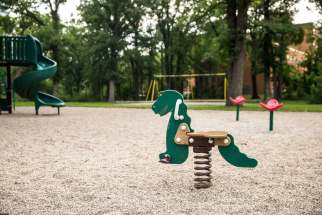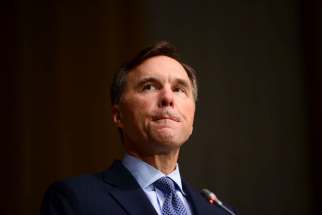Lessons from around the world As Manitoba gets set to unveil its fall school plans, there's no shortage of examples of what does and doesn't work
Read this article for free:
or
Already have an account? Log in here »
To continue reading, please subscribe:
Monthly Digital Subscription
$0 for the first 4 weeks*
- Enjoy unlimited reading on winnipegfreepress.com
- Read the E-Edition, our digital replica newspaper
- Access News Break, our award-winning app
- Play interactive puzzles
*No charge for 4 weeks then price increases to the regular rate of $19.00 plus GST every four weeks. Offer available to new and qualified returning subscribers only. Cancel any time.
Monthly Digital Subscription
$4.75/week*
- Enjoy unlimited reading on winnipegfreepress.com
- Read the E-Edition, our digital replica newspaper
- Access News Break, our award-winning app
- Play interactive puzzles
*Billed as $19 plus GST every four weeks. Cancel any time.
To continue reading, please subscribe:
Add Free Press access to your Brandon Sun subscription for only an additional
$1 for the first 4 weeks*
*Your next subscription payment will increase by $1.00 and you will be charged $16.99 plus GST for four weeks. After four weeks, your payment will increase to $23.99 plus GST every four weeks.
Read unlimited articles for free today:
or
Already have an account? Log in here »
Hey there, time traveller!
This article was published 24/07/2020 (1966 days ago), so information in it may no longer be current.
They are peers in different parts of the world: one group studies in Manitoba schools; the other learns the same curriculum at a private academy in South Korea.
Based in Incheon, a major city that borders the capital of Seoul, CMIS Canada is an international affiliate of Manitoba Education. Lessons on long division and literacy mirror those taught in Manitoba classrooms, from September till June — albeit, they are taught 14 hours ahead.
This year, the South Korean students will go back to school even further ahead, already familiar with the ins and outs of a safe return to classroom instruction during a pandemic.
The proof is documented in their 2019-20 yearbook, which features masked class photos.
“You don’t need to fear going back,” said Grade 1 teacher Lindsay Gemmill, who is originally from Pilot Mound, located 186 kilometres southwest of Winnipeg. “It can be done in a way where kids and teachers are kept very safe.”

South Korea was one of the first countries to experiment with physical distancing in schools, along with Norway, New Zealand and Israel.
Students, parents and teachers, Gemmill included, were anxious when the Moon Jae-in government rolled back a nationwide order on school closures in late May; with six weeks left on the school calendar, CMIS Canada reopened its 300-student campus gradually.
Beforehand, the teachers created a how-to video of themselves navigating the new COVID-19 protocols with backpacks and masks on.
Among the new steps, a temperature check upon arrival, frequent use of hand sanitizer, and physical distancing while climbing stairs, walking down hallways and sitting at desks that are lined up in rows.
Preparation and practise eased nerves, Gemmill said, adding one of the toughest things about teaching children during a pandemic is that “air high-fives” have replaced real ones.
● ● ●
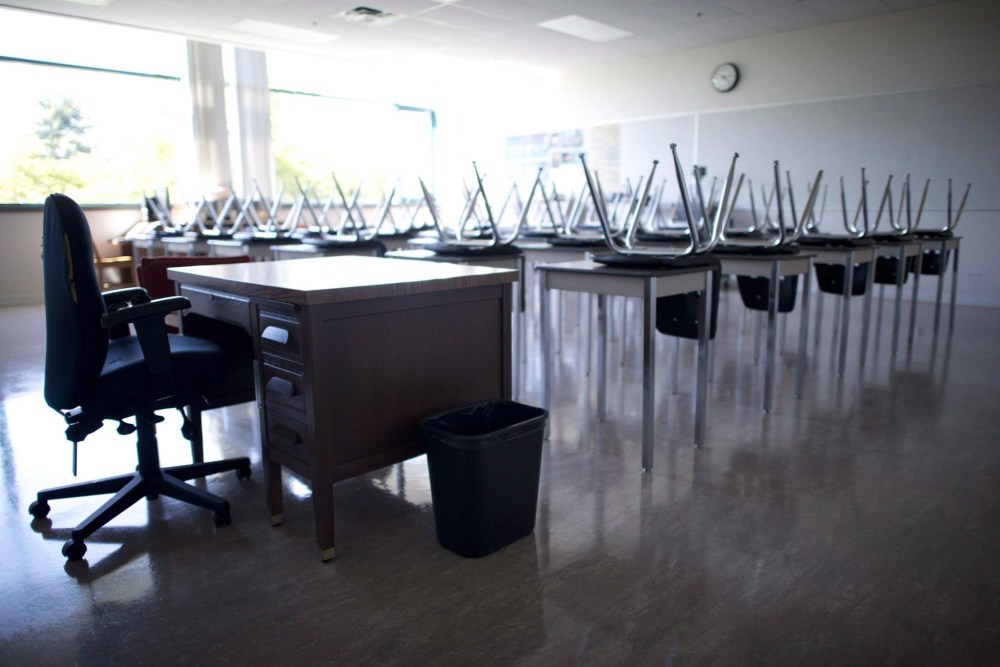
To reopen schools or not to reopen schools, that is the question for teachers planning their lessons for the fall, for students wanting to reunite with friends, for working parents seeking a child-care reprieve, for politicians attempting to restart the economy; and for public health officials — who are in charge of answering that question — monitoring COVID-19 in Manitoba.
On Aug. 1, the provincial government is expected to announce how learning will resume for upwards of 200,000 kindergarten-to-Grade12 students in Manitoba.
The three options are: regular instruction with near-normal conditions; in-class learning for K-8 students and potential blended learning for high schoolers; and ongoing distance learning featuring limited in-person instruction.
So far, Saskatchewan, Alberta and New Brunswick have announced plans to invite students back in September. Quebec will continue to offer in-person instruction, after the widespread welcoming back of students outside of Montreal, the country’s outbreak epicentre, this spring.
A fraction of the more than 58,000 COVID-19 cases in Quebec have involved students and teachers. The province’s education department, which tracked the virus in school communities based on weekly active case counts, said the height of active cases — 44 in total — occurred during the last week of May. The education minister has said the majority of cases occurred outside the classroom.
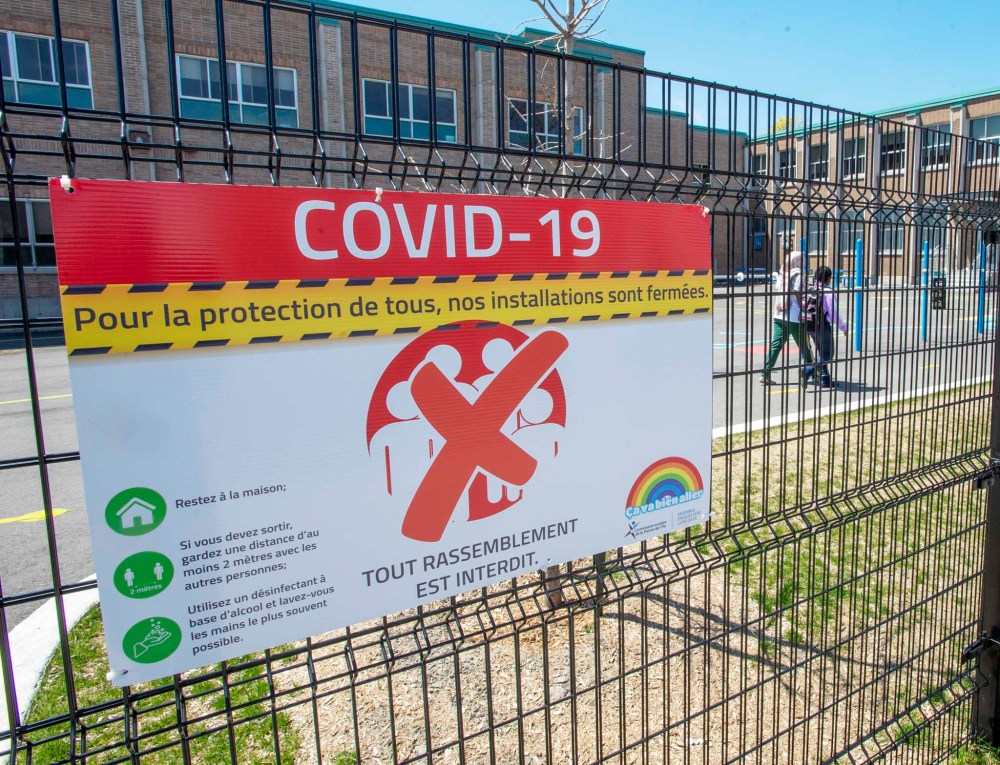
An epidemiologist at Montreal’s McGill University, Jay Kaufman said the advice on how to reopen schools safely is “very sensible and straightforward.” Adults must do their part and follow public health protocols this summer to ensure the prevalence of infection is low so kids can return, he said.
“A place like Manitoba with so few cases is the ideal location in which to be able to do this successfully,” Kaufman wrote in an email to the Free Press, in which he suggested reopening schools would yield a positive experience similar to that of Europe.
The research on how students are affected by SARS-CoV-2, the virus that causes COVID-19, is limited, but the scientific consensus is younger children are less likely to become infected, experience symptoms and become severely ill. While studies indicate teenagers transmit the virus as often as adults, children aged nine and younger are believed to be about half as likely to transmit it.
Keeping this in mind, physicians across the world have put out calls, which have been met with no shortage of criticism and apprehension, to reopen schools.
Supporters say the social-emotional benefits of school outweigh the virus risk for students, and there are countless examples of how to return safely. Critics argue school staff, students and family members’ lives aren’t worth any risk and that it will be almost impossible to enforce social distancing, particularly among the youngest learners.
● ● ●
An estimated 1.4 billion students, or 90 per cent of the world’s learners, have been affected by learning disruptions linked to COVID-19 this year.
During a phone interview from Paris, Suzanne Grant Lewis, director of UNESCO’s International Institute for Educational Planning, put it simply: COVID-19 has caused “the largest disruption to education, ever.”
With most countries still in lockdown, Grant Lewis said both learning loss and the safety of vulnerable children — in particular, poor children, youth with disabilities, internally displaced students and refugees, and girls at risk of gender-based violence, are top of mind.
Reopening schools is the solution, she said, noting the importance of the “three C” planning approach: consultation with community members, co-ordination of plans and communication about delivery.
Grant Lewis added there is no shortage of guidelines, but rather physical space and funding.

International guidelines for reopening schools urge governments to weigh the educational and health benefits for students, educators and the wider community. Up for consideration, as far as the World Health Organization is concerned, should be everything from a school’s ability to accommodate physical distancing to the number of students who rely on healthy breakfast programs.
The recommendations are united in their common-sense approach, emphasizing the importance of developing a comprehensive sick policy that discourages anyone from attending class if ill and the frequent, rigorous cleaning of both hands and hallways.
Regulating spacing with reminder signs and stickers, individual desks spaced apart, smaller class sizes, “cohorting” — a buzz word that refers to the grouping of students by class or grade to limit intermingling — and moving teachers from class to class rather than students, are also widely recommended.
In Norway, schools limited classroom capacity to 15 students. Additionally, schools divided playgrounds and implemented the regular washing of desks — a move the president of the country’s largest teachers union said caused a kerfuffle because of concerns about who would undertake such a task: students, teachers or support staff? (Ultimately, it’s been a mix of all three.)
Even still, Steffen Handal of the Union of Education Norway, said the mid-April reopening, “has actually gone quite well.”
“We decided early on that (educators) are not experts on COVID-19, so we would not discuss with health authorities whether or not it was safe to reopen schools,” said Handal, who represents more than 182,000 Norwegian teachers, during an interview from his cabin near Oslo.
Norway reopened schools after a six-week closure.
Neighbouring Sweden was one of few countries that did not close schools as part of its anti-lockdown strategy, while Finland did close schools.
Sweden and Finland released a joint statement this month that compares their respective virus trends. The analysis suggests Sweden’s controversial decision did not affect its curve.
“We knew education was going to play an important leadership role in getting the country back on its feet.”
— Liam Rutherford, president of the New Zealand Educational Institute Te Riu Roa
Similarly, Norway hasn’t seen a spike related to schools reopening. To date, case studies of reopenings in areas with low or no community transmission indicate reopening schools doesn’t affect a country’s case count.
Small classrooms and limited school bus capacity have meant not all Norwegian students can attend school daily, but Handal said the goal is to get every student into the classroom at least once a week. To address limited capacity, experts recommend schools alternate schooling days. For high schoolers, the WHO suggests timetables be expanded to offer courses in the morning, afternoon and evening to space them out.
Across the world, on an island that has all but eradicated COVID-19’s presence, New Zealand’s school reopening is considered another success story. Class is currently in session.
“We knew education was going to play an important leadership role in getting the country back on its feet,” said Liam Rutherford, president of the New Zealand Educational Institute Te Riu Roa, from the capital of Wellington. Rutherford said that is exactly why the government and union worked together to reopen schools in May. It couldn’t have happened without collaboration or a robust contract tracing system, he added.
When a “cluster” was detected at a school early on, following a gathering at a parent’s evening, Rutherford said the ministry of health acted quickly. It was a “litmus test” on reopening schools that built trust among the population, he said.
If a case is linked to a school, administrators call the government, which then comes into a school, communicates with a community and works with the individual who is believed to have COVID-19 to retrace their steps over the last 48 hours to identify the people they have been in contact with. All close contacts are then required to self-isolate for 14 days.
Months later, with no signs of community transmission, New Zealand schools are operating without social distancing in place. Even assemblies and sporting events are resuming. Strict quarantines are still required of anyone who lands on the island, but life has largely returned to normal.
Not so in Israel, where school is out for the year after a chaotic attempt to resume instruction safely.
● ● ●
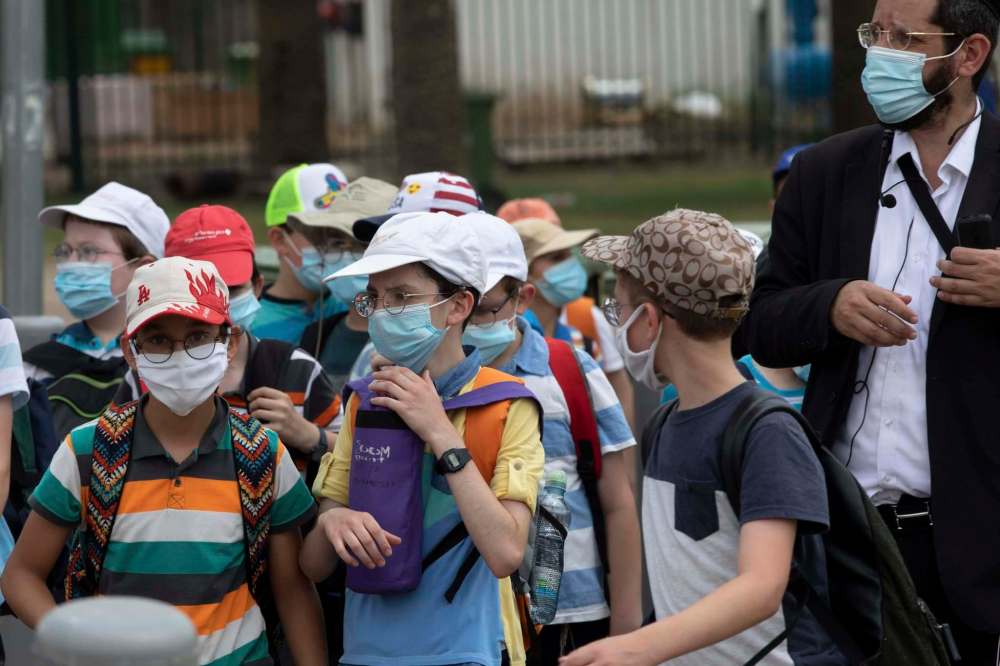
“It’s a cautionary tale.” That’s how Dr. Ora Paltiel, a hematologist, professor of epidemiology and the former director of the Braun School of Public Health at the Hebrew University of Hadassah, describes how reopening schools went in Israel.
The reason being, she said, is that it happened too soon. In an attempt to resuscitate the economy after an extreme lockdown, Israel rushed to reopen schools and businesses. Pockets of COVID-19 cases soon started to pop up all over the country, in schools and otherwise.
Paltiel said it didn’t help that a severe heatwave resulted in the loosening of the requirement all children older than seven wear masks at school, according to the Canadian-born doctor living abroad. Hundreds of Israeli schools closed not long after they reopened. “The schools are nothing special … Whatever’s going on in the community is going to be reflected in schools,” Paltiel said.
Once a case has been confirmed in a school, the U.S.-based Centers for Disease Control and Prevention recommends administrators dismiss staff and students for an initial two-to-five-day period to undertake rigorous cleaning and allow public health officials to examine the situation. It is recommended schools discourage community gatherings and cancel events during the investigation.
In order to avoid such a situation, Paltiel suggests schools focus on addressing crowding concerns and take advantage of empty church basements, hotel conference rooms and local community centres to hold small classes and abide by physical distancing in the fall. If students are old enough, Paltiel also proposes students wear masks — a measure experts differ on.
The Toronto-based SickKids Hospital guidelines do not recommend masks be made mandatory. “It is impractical for a child to wear a mask properly for the duration of a school day,” according to the guidelines published mid-June. The document states masks can be irritating and lead to increased touching of the face and eyes, ramping up risk of infection, while affecting mouth-reading and other learning cues.
In South Korea, however, masks are now as common as pencil sharpeners in classrooms. Gemmill said she’s had no issue with her five- and six-year-olds wearing masks properly, but she acknowledges masks have long been part of Asia’s public health culture.
Mandatory masks aside, CMIS Canada’s policies have been altered to indefinitely suspend pizza parties and require students to follow physical distancing markers on the floor, which have been posted in school colours, red and blue.
Teaching principal Josh Berkal, who is from Winnipeg, said it’s unlikely these changes will be reversed anytime soon.
Ahead of the reopening pack, Berkal’s team flipped through SARS manuals to design a safe return to school in the spring. Considering Manitoba Education is far behind the affiliate academy, Berkal has since given officials feedback on how to reopen.
His advice? Planning must take into account all perspectives, from K-12 parents to student council members, and be done on both macro and micro scales.
Above all, Berkal said it’s important to remember that kids adapt. He cited recess games on his campus pivoting from ball sports, which have been banned as a precaution, to shadow tag and jump rope this spring.
“There’s always going to be risk, and I think staff, students, anyone has to understand that this is not a 100 per cent proof plan,” Berkal said, during a recent call from Incheon. “This is to minimize the threat of a spread of an illness, that if someone gets it, things are contained. That’s the plan.”
maggie.macintosh@freepress.mb.ca
Twitter: @macintoshmaggie
School reopening suggestions
“Age-appropriate communication about COVID-19 and what to expect when children and youth return to school should occur in advance of school reopening” – SickKids Hospital
“Ensure that school entry immunization checks are in place (and) check vaccination status for outbreak-prone vaccine-preventable diseases (e.g. measles)” – World Health Organization
“Discourage the use of perfect attendance awards and incentives” – Centers for Disease Control Prevention
“Assign lockers by cohort of eliminate lockers altogether” – American Academy of Pediatrics
“As much as possible, people must avoid sharing items (pencils, toys, copybooks, dishes, utensils, etc.); students and staff must limit the items they carry with them between school and home; students and staff must bring their own lunch” – Government of Quebec
“Increase provision of mental health and psychosocial support services that address stigmatization/discrimination and support children and their families in coping with the continued uncertainties of the pandemic” – Global Education Coalition

Maggie Macintosh reports on education for the Winnipeg Free Press. Funding for the Free Press education reporter comes from the Government of Canada through the Local Journalism Initiative.
Our newsroom depends on a growing audience of readers to power our journalism. If you are not a paid reader, please consider becoming a subscriber.
Our newsroom depends on its audience of readers to power our journalism. Thank you for your support.



